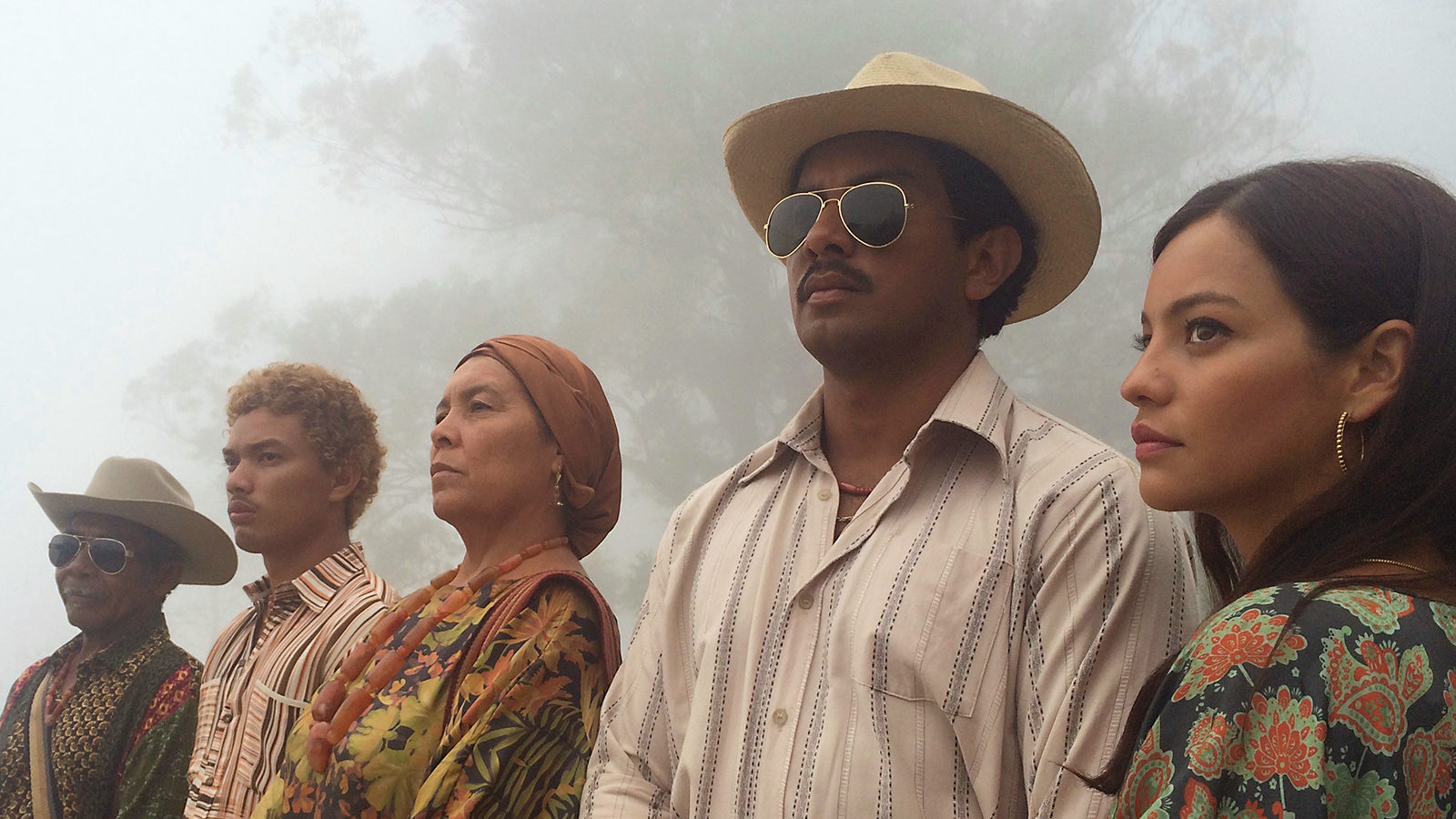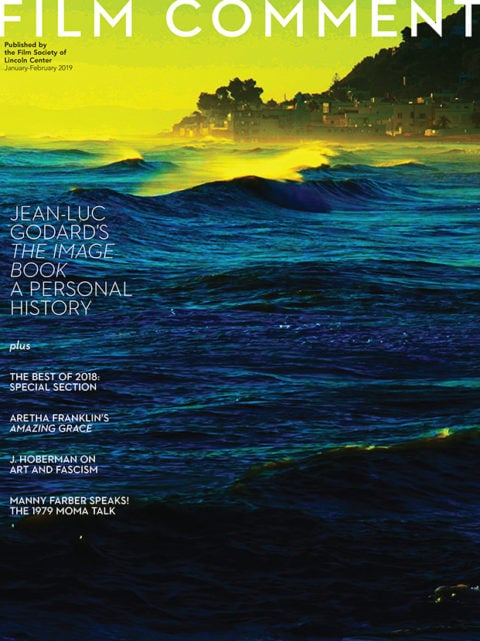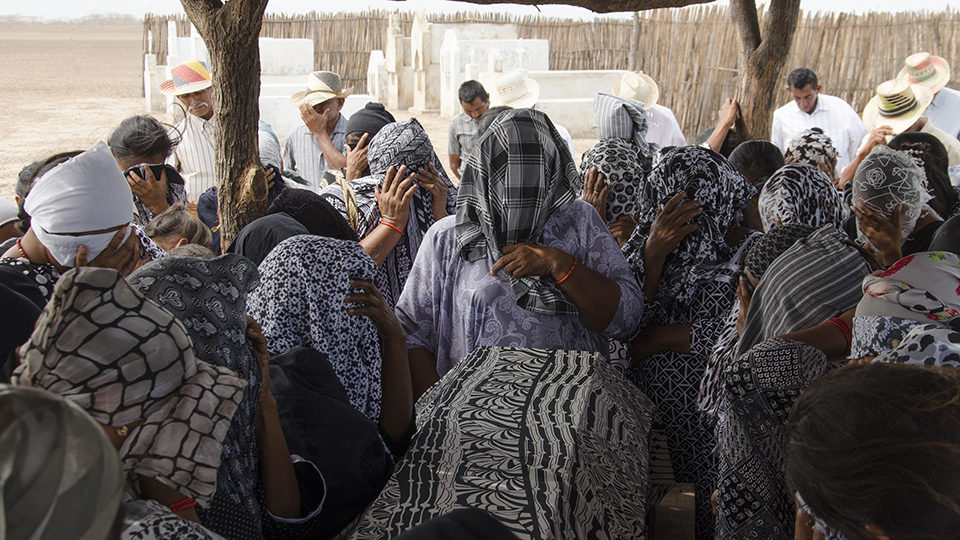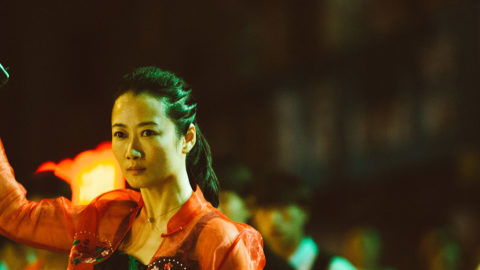By Manu Yáñez Murillo in the January-February 2019 Issue

The Big Screen: Birds of Passage
(Ciro Guerra & Cristina Gallego, Colombia/Denmark/Mexico, The Orchard, Opening February 13)
Despite the leap to a larger production scale and to a multicharacter narrative, Birds of Passage can be seen as an extension of the modes, themes, and spaces that characterized the previous works of Colombian filmmaker Ciro Guerra, who is joined by his longtime producer, Cristina Gallego, as co-director. As in The Wind Journeys (2009), the Guajira Desert plays a substantial role both as an open space which underlines the physical presence and existential fragility of the characters, and as a symbolic territory, where tradition clashes with a brazen modernity—the most unforgettable image of Birds of Passage being the luxurious rococo mansion where an Indian turned drug lord orders killings and alienates himself from his family and his community. And as in Embrace of the Serpent (2015), the filmmakers explore the perils of exposing the indigenous cultures of Latin America to Western interests, a critique of colonialism driven home through the portrayal of old rituals and traditions that are subject to extinction in a globalized world, as with the richly codified oral mediation between tribes in Birds of Passage.

From the January-February 2019 Issue
Also in this issue
Through the story of a family drug dynasty, Gallego and Guerra here chart a particular stretch of Northern Colombia’s history, from the 1960s to the 1980s—the embryonic era of the drug trafficking industry. In doing so, they claim the right to chronicle from a native perspective a story that could easily furnish material for a prequel series to Netflix’s Narcos. Combining the use of professional actors and indigenous non-actors, and paying substantial attention to the use of Wayuunaiki, the language of the Wayuu people, the opening of Birds of Passage brings to mind the stunning Tabu: A Story of the South Seas, where F.W. Murnau—with the help of Robert Flaherty—depicted in Edenic terms the sensual, exuberant rituals of an aboriginal community soon to be corrupted by Western greed. The film’s most telling influence, however, is the oneirism and magical realism of Gabriel García Márquez, whose great-grandmother was in fact a Wayuu. It’s difficult not to see traces of Úrsula Iguarán, the matriarch of the Buendía family of One Hundred Years of Solitude, in the Úrsula Pushaima of Birds of Passage—played by Carmiña Martínez, an actress with a 30-year career in the theater—who is the spiritual and economic driving force of her clan, which becomes a major player in the drug trade.

The problems of Birds of Passage—of its story and of the movie itself—begin with the arrival to the Guajira of a band of American hippies who work for the Peace Corps and function as emissaries of anti-communist propaganda. It’s a picturesque, historically grounded, yet fairly facile way to allude to the seed of capitalism, an ideological virus that will unleash a swirl of greed and violence among the Wayuu people. The movie plays out this process of self-destruction by invoking the totemic directors of the New Hollywood. Using the archetypes of the Wayuu society to build up a saga that recalls The Godfather—with Úrsula emerging as a feminized hybrid of Vito and Michael Corleone—Gallego and Guerra attempt to fulfill the promise of a Latin American artistic-financial domestic-international hit, rooted in national history but indebted to foreign forms of popular cinema. One could draw a delicate correspondence between the fate of the characters in Birds of Passage—culturally demolished by the search of profit—and the film itself, though the import of American filmic models undeniably enriches the movie’s expressive and political vigor. Suffice it to say that while watching Birds of Passage this critic couldn’t stop thinking about Martin Scorsese’s Casino, with its lucid and kinetic dissection of the annihilation of a subculture at the hands of global capitalism.
Manu Yáñez Murillo is a film critic and journalist, and has written for Fotogramas, Rockdelux, Ara, and Otros Cines Europa. He is the editor of the anthology La mirada americana: 50 años de Film Comment




